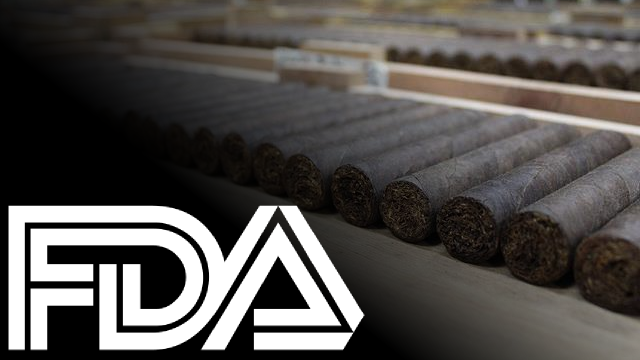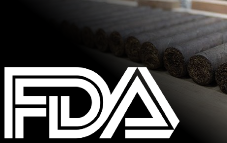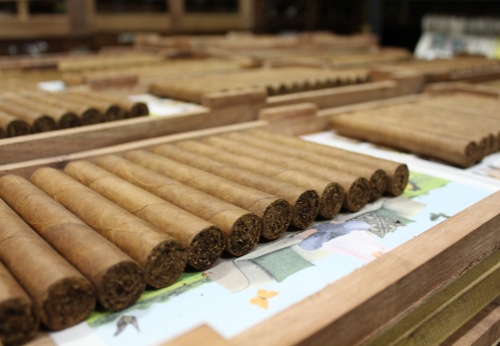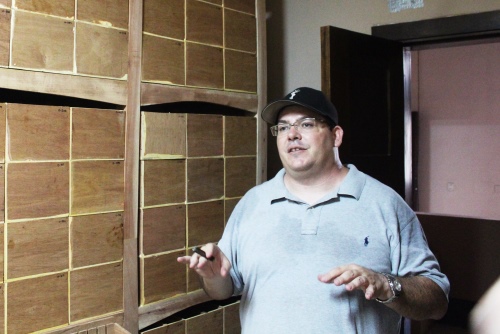Commentary: Questions for the FDA About the Proposed Regulation of Cigars
13 May 2014
The Food & Drug Administration (FDA) is now seeking comments on its deeming document to regulate cigars under the Tobacco Control Act. Comments are due by July 9 and can be submitted here. (We’ll be putting together some suggested issues to raise in your comments as we get closer to the deadline.)

But as I thought about putting together my comments, I realized there are many significant issues that are almost impossible on which to comment. There are so many questions raised in the deeming document about what the proposal would even look like if implemented. It’s just one of the reasons the FDA should grant the Cigar Association of America extension.
To that end, here are just a few questions the FDA should answer so the public can submit informed comments about the proposal, not just ones based on an overly vague proposal.
What counts as a new cigar?
Under the FDA proposal, new cigars (or, under Option 2, new cigars that don’t meet the definition of a “premium cigar”) must receive the approval of the FDA before they can be sold. Is a new line of five sizes of the same blend one new product or five? Is an annual release of a cigar a new product, or just the same as a previous one? What if the factory where a cigar is made changes, or the sources of tobacco change? Does that make a cigar new?
Does the FDA even have the capacity to regulate cigars?
So far the FDA has approved or denied only 34 out of roughly 4,000 pending applications for new products. Given its current budget constraints, does the FDA have the capacity to rule on the hundreds or thousands (depending on the definition of a new cigar) of new cigars that are released in a given year?
What would be necessary to list the ingredients of a cigar?
One of the rules cigars would have to meet is a “required submission of ingredient listing” to the FDA. Is 100% tobacco leaf adequate? Would manufacturers be required to list the types of tobacco and where they were grown?
What constitutes the “distribution of free samples”?
The proposal includes a “prohibition on the distribution of free samples,” but would that include only samples to consumers? What about free samples at a trade show, or to professional reviewers? Would a buy-one-get-one-free promotion violate this prohibition? Would this only apply to manufacturers, or also to professional tobacconists who might want to give a favorite customer a new cigar to try for free?
What qualifies a cigar as containing “primarily long-filler tobacco”?
The FDA proposal states that under its option for a premium cigar exemption a cigar could qualify if it “contains primarily long-filler tobacco.” Would a Liga Privada Papas Fritas count? It uses clippings from the $10+ Liga Privada No. 9 cigar, but also some long-filler. Would 51% be adequate and, if so, how is that measured?
What do you mean by “characterizing flavor”?
The FDA proposal states that under its option for a premium cigar exemption a cigar would only qualify if it “does not have a characterizing flavor other than tobacco.” Would using tobacco aged in rum barrels (a common practice) be a violation? Would using betunes with wine or curing with aromatic woods like maple, hickory, or oak be a “characterizing flavor”? What about aging a finished cigar in cedar? (The FDA has been asked before about cedar aging and has refused to answer.)
Where did the $10 price floor come from in your option for a premium cigar exemption and how is it applied?
We’ve already covered the problems with the $10 number before. Did this number come from any government or scientific sources, or is it completely random? Also, how is “a retail price (after any discounts or coupons) of no less than $10 per cigar” determined? If the suggested retail price is $10 but it is sold by one retailer for less, is that a violation? And, if so, who violated the rule: the manufacturer or the retailer?
photo credits: Stogie Guys




 1) On Tuesday, the International Premium Cigar & Pipe Retailers Association (IPCPR) issued a legislative alert to prepare its members for the public comment period of forthcoming Food & Drug Administration (FDA) regulations. “We believe it is critical that the industry works together and takes a unified approach to the regulations we are facing,†reads the alert. “IPCPR’s first step is to request an extension of the 75 day comment period granted by FDA in the Notice of Proposed Rulemaking. We feel an additional 60 days is critical for affected parties to provide substantive comments, data, research, and other information to aid in FDA’s decision-making process.†IPCPR is also encouraging its member retailers to ask their customers to participate in the comment period, and will be distributing literature on how individual cigar smokers can participate in the process. In that same vein, Cigar Rights of America set up
1) On Tuesday, the International Premium Cigar & Pipe Retailers Association (IPCPR) issued a legislative alert to prepare its members for the public comment period of forthcoming Food & Drug Administration (FDA) regulations. “We believe it is critical that the industry works together and takes a unified approach to the regulations we are facing,†reads the alert. “IPCPR’s first step is to request an extension of the 75 day comment period granted by FDA in the Notice of Proposed Rulemaking. We feel an additional 60 days is critical for affected parties to provide substantive comments, data, research, and other information to aid in FDA’s decision-making process.†IPCPR is also encouraging its member retailers to ask their customers to participate in the comment period, and will be distributing literature on how individual cigar smokers can participate in the process. In that same vein, Cigar Rights of America set up  I’ve smoked a number of these over several months and found them to be amazingly consistent in both flavor, strength, and performance. The beautiful, light honey-brown Habano wrapper, grown in Brazil, is topped with a perfectly applied cap. The burn line is truly razor sharp, the draw near ideal.
I’ve smoked a number of these over several months and found them to be amazingly consistent in both flavor, strength, and performance. The beautiful, light honey-brown Habano wrapper, grown in Brazil, is topped with a perfectly applied cap. The burn line is truly razor sharp, the draw near ideal.


 Patrick Ashby
Co-Founder & Editor in Chief
Patrick Ashby
Co-Founder & Editor in Chief Patrick Semmens
Co-Founder & Publisher
Patrick Semmens
Co-Founder & Publisher George Edmonson
Tampa Bureau Chief
George Edmonson
Tampa Bureau Chief